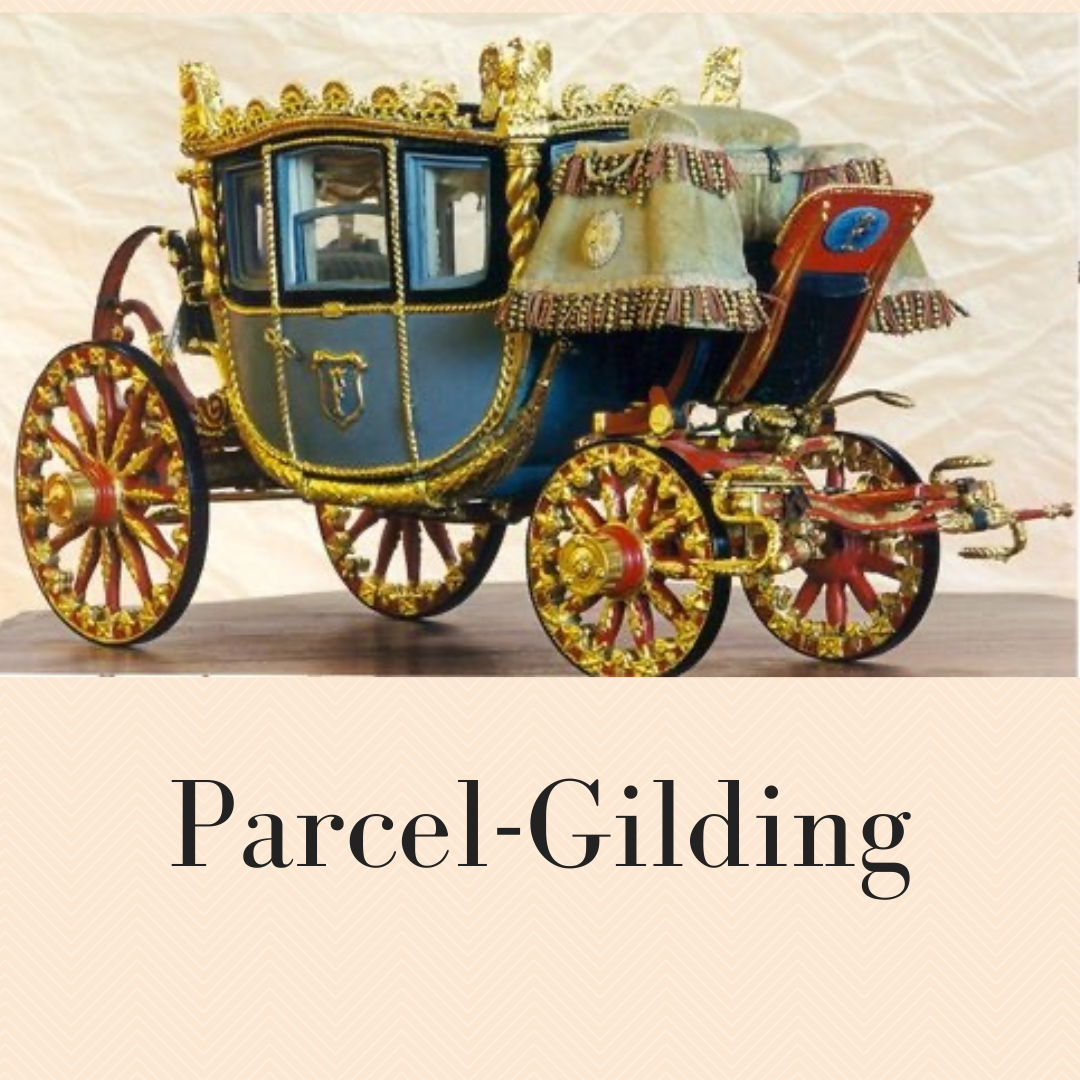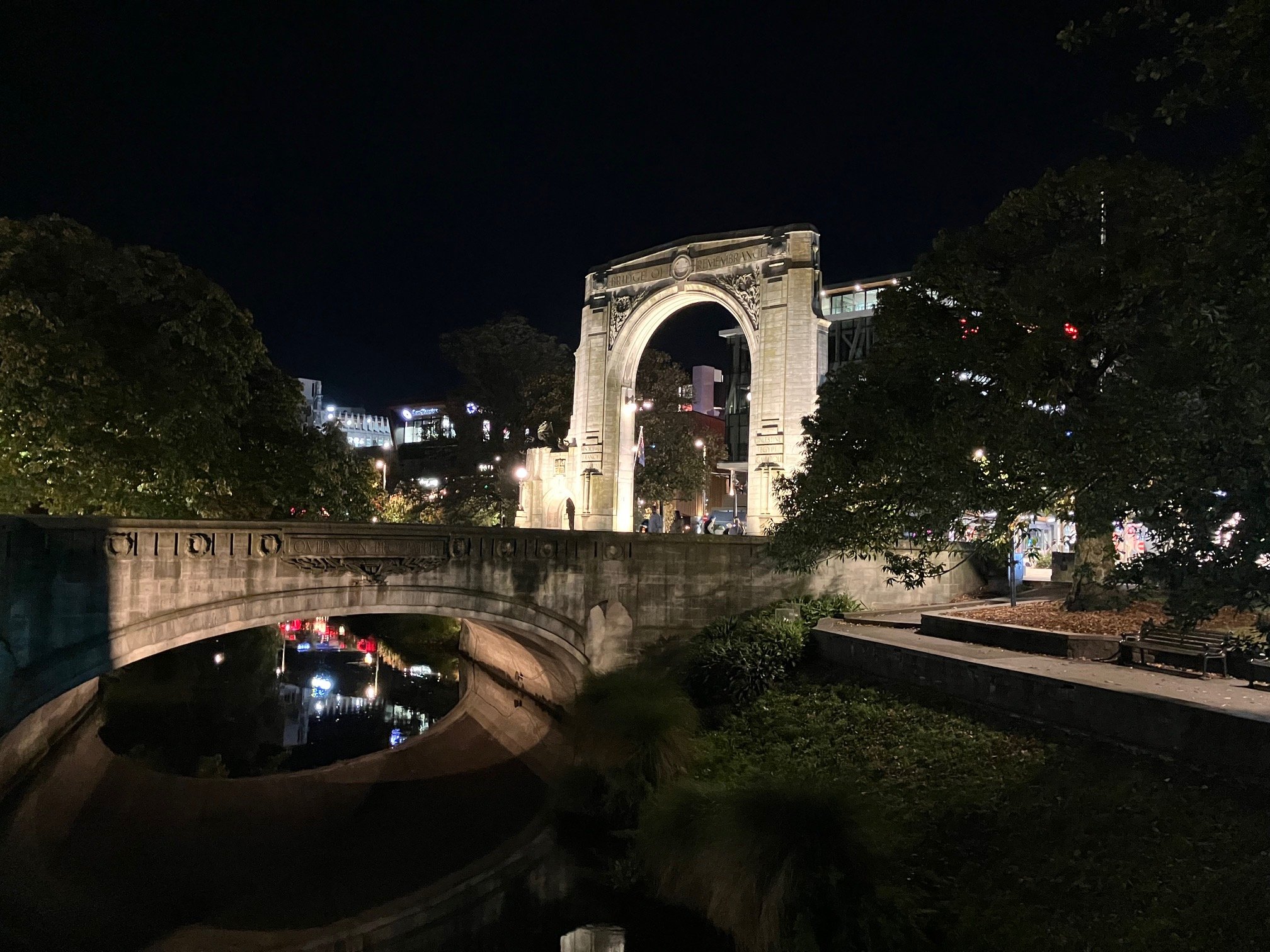The word Parcel-Gilt was first used in 1453 during the Middle English period and known somewhat later in 1519 as Parcel Gilding. It describes the practice of gilding only parts, or partial areas of an object, an approach that dates back to at least the middle of the 15th century in Western Europe and likely earlier in other areas of the world such as China where bronze elements were gilded for furniture, a technique known as Ormolu.
Parcel derives from the French word Parcelle, which refers to a small part or plot of land, which for gilding extended to mean small areas of an object that are gilded as opposed to an entire surface. Parcelle in turn derives from the Late Latin Particella, a diminutive of Particula and then a diminutive of Pars (meaning Part).
If we go back in history a bit to the Norman Conquest of England in 1066, French became the language of the Court. The mixing of language through the early to late Middle English period paved the way for the English language being heavily influenced by the French language. (Long ago as a young man of 20 I spent a Summer in England in a little Hamlet called Ashburnham next to the small Village of Battle where the Battle of Hastings took place all those years ago. It was during this trip that I hopped a ferry to Calais and a long bus ride bus to Paris and the Palace of Versailles, unknowing at the time how this would all later inform my career as a gilder).
Any project that incorporates gilding only specific sections of an object can be considered Parcel-Gilding. It may not always be considered as such but I suspect that’s because of the context of the origins of the word Parcel-Gilding being born of Middle English. Nonetheless, this approach to gilding can be seen in a variety of examples, one being a project of mine where I Oil Gilded a Sacred Altar for the Hare Krishna Community at the Vedic Cultural Center in Sammamish, Washington. The Altar with its deeply carved ornamental wood imported from India, stood 12 feet high and 20 feet wide. It kept me busy for months on a scaffold as I listened to the soothing chants and sounds of bells and tablas.
To provide aesthetic contrast the decision was to gild only the Relief Accents of the Altar which consisted of highly adorned Pillars, a multi-step Platform, and two-tier Dome requiring 1,000 leaves of 24kt Gold Leaf, the purity of gold chosen for respect for Krishna.
Parcel-Gilding is a considered approach for many gilding projects, from Decorative Objects and Boiserie (highly carved relief in Wall Paneling, popular in 17th-18th century France) to Frames and Furniture. It can provide an air of elegance and contrast without visually overtaking an object or room. It can also provide a cost-effective approach in design planning where cost is a consideration while maintaining an essence of quality.
To help further the growth and understanding of historical gilding practices I am offering a new three-part Online Series called: Exploring the Technique of 15th-16thc Parcel-Gilding. Students will also learn practical gilding techniques through Demonstrations of Parcel-Gilding on Decorative Objects using the Oil Gilding Method and 22k Gold Leaf. ~




